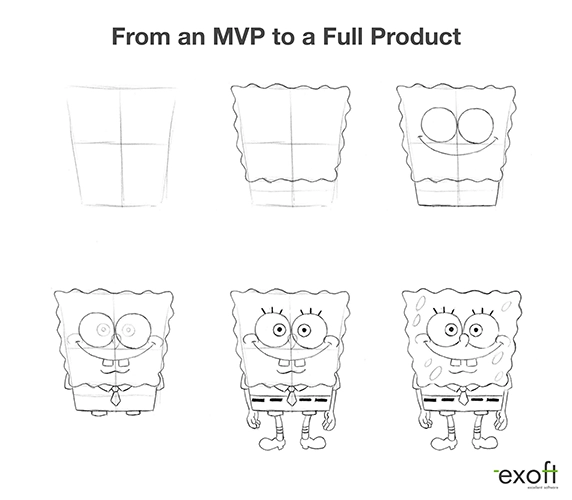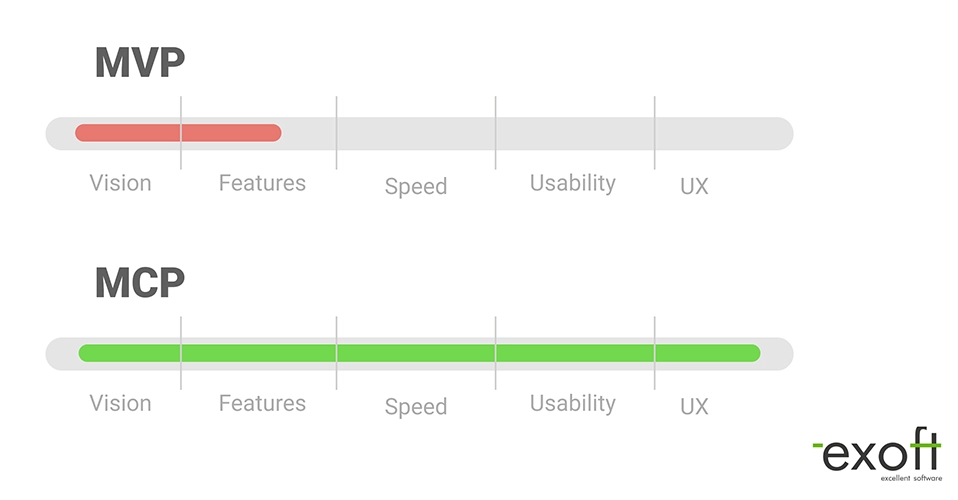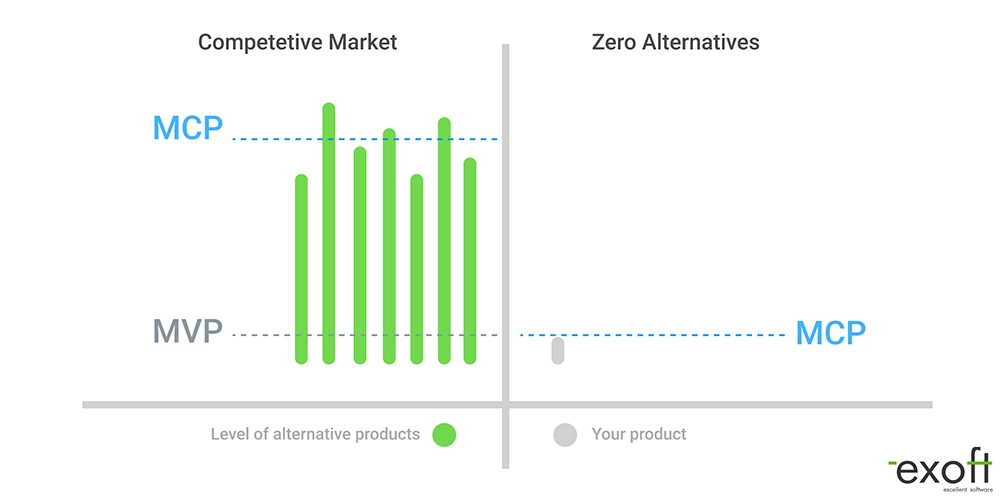Blog
MVP and MCP, although completely different, might be confused. MVP gives a quick market entry with basic features, while MCP offers a more polished product with improved performance, usability, and UX. Our in-depth guide helps businesses select between the two options based on their market strategy, resources, and user expectations.
Building a minimum viable product (MVP) has long been the proven first step on the way
towards the creation of a quality solution. But since the concept of a minimum compelling
product (MCP) emerged on the horizon, the discussions of which strategy is better for
software development projects have never stopped.
To help you make the right choice between MVP vs MCP, we’ve explored this issue in great detail and are ready to share the key insights.
MVP Meaning in Project Management
An MVP is a version of a new product that has a minimal yet sufficient set of features to satisfy early customers and let its creators learn from user feedback. The main goal of an MVP is to get a product to the market as quickly as possible in order to allow a team to:
- see how users interact with it
- validate the main assumptions, and
- apply acquired knowledge to further development
So, simply put, a minimum viable product means that it has the limited functionality that is just enough for product creators to understand if they’re building the right thing.

For instance, an MVP of Airbnb, a famous online hospitality service, looked like a simple web page with a few pictures of its creators’ apartment. No other features like ratings or even search bars existed at that point. Airbnb’s founders just wanted to test if people would like to rent a room from individual owners rather than stay in a hotel while traveling. It turned out to be a great idea so they keep building the web app which now has about 150 million users.
The key difference between an MVP and MCP
At its core, an MCP is very similar. It’s also an early version of a product released to validate creators’ hypotheses and prove a product-market fit. However, supporters of this concept argue that a product must be compelling to users, not just viable, to bring the expected results. That’s why followers of the MCP approach put a delightful user experience along with the functionality to be tested at the center of the development.

In practice, this means:
- adding more features (at least those which are considered industry standards like tagging friends in social media apps)
- paying great attention to the UX design (since it has a direct impact on the users’ perception of a product)
The main downside of MCP development as compared to MVP software development is that it takes more time and, thus, requires more initial investments. But MCP-advocates believe that it’s the only way to get accurate feedback. As expectations have become higher, users cannot adequately assess the product if it only has the features which make it viable. It must also be appealing.
So does 'viable' mean 'bad'?
A minimum viable product isn’t just another name for a low-quality product. Actually, giving
users something that doesn’t work well makes no sense because they’ll unlikely appreciate
the idea behind it. So although an MVP doesn’t have enough features to become a minimum
marketable product (i.e. product with minimum features you may sell), it must perform all
its functions seamlessly.
The exact functionality to be included in an MVP is defined on a case-by-case basis. Basically,
there are several possible options:
- basic features of similar existing products plus key/all new features
- only new features
- separate features of similar existing products but with the higher quality (i.e.more advanced)
Since every product is unique, there is no exhaustive list of criteria which need to be considered when choosing a feature-set for MVP development. But the general recommendation is to focus on hypotheses that need to be tested as well as the functionality allowing users to get the right vision and feel of the final product.
Choosing Between MVP and MCP Web Development
The first thing you should understand when making a choice is that every option has its pros and cons. That’s why you should focus more on the nature of your product and specifics of the target markets rather than a mere theory. In particular, you strive to answer the following questions:
- are there products with similar functionality offered on the market?
- if yes, are they popular?
- does your target audience overlap with the target audiences of such products?
- are there any standard features users expect to have in all products of a certain type (e.g. route tracking in the Uber-like on-demand taxi app)?

If no alternatives exist, it’ll be a wise decision to start with building an MVP. This approach will allow you to release the product faster and get user feedback early on. It’ll also require less costs.On the other hand, if you’re going to release your product in a highly competitive market, it’s worth investing time and money in minimum compelling product design and development.
Putting it all together
MVP and MCP are two equally powerful concepts for product development, both integral to the system development life cycle. To decide which option would be a better fit for your project, you should find out what alternatives are already offered by your competitors (if any). In general, the time will be on your side if you opt for the MVP development, especially if you're leveraging tech stack modernization services to streamline your development process. But in case the market is saturated with similar products, odds are the MVP won’t bring you adequate feedback. That’s why when user expectations are well-formed and high, try to make the early version of your product not only viable but also compelling.
